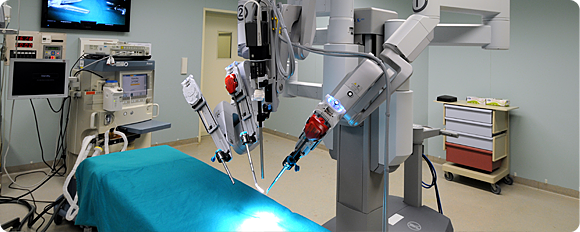Correction of Genital Prolapse with Robotic Surgery (Robotic Sacrocolpopexy)
Hysterectomy (removal of uterus) is the most commonly performed surgery in gynecology. In some patients, the vaginal vault prolapses out of the vagina after this surgery, and in advanced cases, the vagina turns inside out like a balloon and protrude outside. The prolapsed vagina pulls down the bladder at the back and the last portion of the large intestine (rectum). The primary treatment of this condition is surgery. In addition to correction of the vaginal vault, the bladder and rectum should also be corrected in the surgery.
In vaginal vault prolapse, there are multiple surgical options, and the most appropriate surgery should be selected for the patient.
In recent years, closed surgeries (laparoscopy) are preferred because of the advantages such as absence of incision, less blood loss, early discharge and early return to work. Laparoscopic surgeries have some challenges. The most important challenge is the difficulty of suturing and knotting. These challenges are overcome by robotic surgery. The arms of the robot are able to perform all the movements of the wrist. In addition, the surgeon can see three-dimensionally, enlarge the view that s/he wants, and work in narrower areas.
The success rate of robotic sacrocolpopexy is above 90%. Moreover, the robot is also used to correct prolapsed uterus without removing the uterus.
